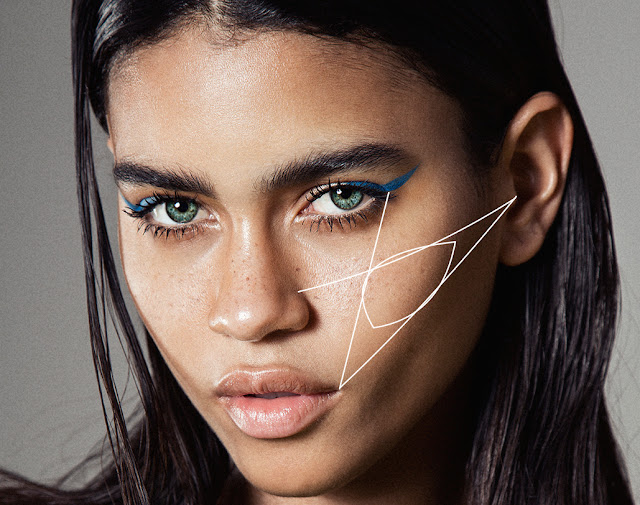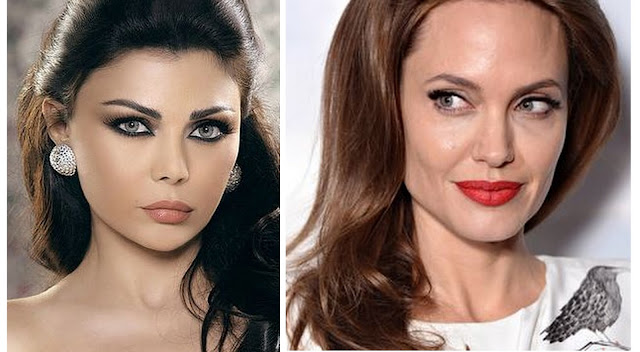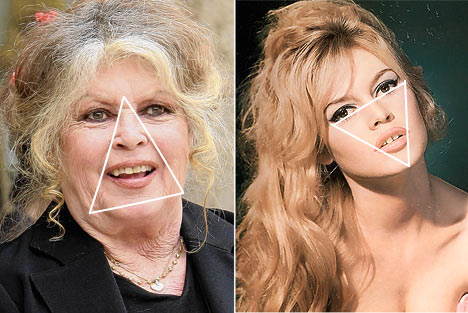Why
certain faces attract envious glances, possess the invisible power to turn
heads, and invoke a certain chemistry of attraction with human visual cortex? More
importantly, what qualities make such faces so special that they can unintentionally
become the focus of any lens; ogled and admired by all eyes that happen to gaze
upon them? Can we measure attractiveness and recreate it and if the answer is
yes, can we impart it onto the faces that genetically lack it? Questions, catechism
and more queries — Aesthetic medicine has been on a quest for forever and more to
find out answers to questions like these.
Is
beauty divine and bestowed by God only or can mortal hands recreate them?
Beauty
might be divine in origin but if we can set benchmarks and quantify it — once
that is done that we can attempt to recreate it. Actually plastic surgeons and
aesthetic doctors have been carving beautiful visages out of ordinary faces for
years now. Ancient Greeks believed beauty lies in the mathematical proportions
of a face, rather than just being in the eye of the beholder.
Lets follow this
train of thought and see where it leads us.
What defines a beautiful
face? — Looking
from the perspectives of poets, painters and sculptures a unique set of pretty
features arranged in a certain mathematical proportion to one another creates a
fascinating face. The individual features that invoke beauty include: a smooth
convex forehead, a symmetrical set of big eyes highlighted by arched brows,
small nose, voluptuous lips, dainty chin, high cheek bones and a chiseled
jaw-line, Being a dermatologist I’d add perfectly flawless and radiant skin to
this mix and we have perennial beauty at our hands.
Looking At Facial Features:
Research linking beauty
to evolutionary psychology has shown that attractiveness perception comes from
how our brain perceives information in general coupled with adaptations for
mate choice because attractive traits signal important aspects of mate quality,
such as health and fertility.
From
an evolutionary standpoint, fuller faces indicate heart health and immunity to
infections. So, to some degree, we are programmed to be more attracted to
certain faces over others. Sexual dimorphism, a fancy term for sex-specific
traits, is one of the major factors in determining what we find beautiful. The
more feminine a woman’s features are, the more attractive she’s perceived to be
through a male set of eyes. For women, things like large eyes, a small nose and
fuller lips are generally found to be more attractive since they are considered
to enhance facial femininity.
Take
home message at this point is: if you don’t look like Angelina Jolie it doesn’t
mean you’re out of luck. It’s important to note that it’s less about your
specific features than it is about the overall face. In other words, as long as
your features collectively feminize your face (even if you have a larger nose
or thinner lips, for instance), you’re still considered pretty in a male visual
cortex. If high cheekbones contribute to greater femininity, then the total
look would be perceived to be attractive. Not necessarily just the high
cheekbones on their own.
The
overall face and the proportion of features compared to each other give a face
an attractive advantage over others. Aesthetic doctors use this fact, while
they remodel faces using surgical or non-surgical treatments.
The
perceptions of beauty also differ from one cultural to another and also across
timelines (old time period to modern times). Like these days among Caucasians model-skinny
or angular faces are considered ideal. While in Asian and Arab cultures more
fuller and contoured faces are considered attractive, which used to be popular in
older times in Caucasian societies as depicted by renaissance literature and
art.
A study
done at St. Andrews University few years back showed that facial adiposity, or
the perception of weight in the face, was actually rated as more attractive to
men. From an evolutionary standpoint, fuller faces indicate agreeable
cardiovascular health and immunity to other infections. Good health equals
healthy babies. At least that may have been our ancestors’ unconscious
reasoning. Symmetry and average-ness are also equally important when it comes
to perceptions of beauty. Believe it or not, being average is cool. Both appear
to indicate high variations in individual proteins, which lead to fewer birth
defects in offspring.
Cognitive
researchers Dr. Kang Lee and Dr. Pam Pallett published a study
in 2010 that attempted at explaining the key factors that determine how
attractive a woman’s face may appear to others. According to their research the
distance between a woman’s eyes and the distance between her eyes and her mouth
holds the key to her attractiveness. They also suggested in the study that keys to
attractiveness include facial ratio, alluring features, symmetry and
average-ness.
Facial Symmetry is considered beautiful
because it rules out a history of poor developmental stability early on —for
example, a major illness or a nutrition deficiency (which could lead to
asymmetrical features). Evolutionary psychologists believe humans have evolved
to find healthy facial features attractive, and symmetrical facial features are
a good indication of health. Anti aging research has shown that as we grow
older the asymmetry of the face becomes exaggerated, hence asymmetry is linked
with aging and fading beauty.
Facial Features Average-ness Another reason you might be
considered attractive is because you’re familiar. In a study
at Brandeis University, there was a higher rate of agreement among close
friends, siblings and spouses on what they considered attractive among strangers,
suggesting that attractiveness has a strong social component, too. People who
have already formed romantic relationships idealize their partner’s facial
features, so they actually perceive them to be more physically attractive than
other people would. These days movies and media also have a strong influence on
what we perceive as beautiful. Like in certain societies big lips are
considered a mark of beauty, while in other cultures high cheek-bones and
chiseled jaw-line is considered more beautiful compared to a more chubby and
rounded face.
Aging & Beauty
As we age all layers of our
face under go changes. Skin
looses collagen and elastin, which makes face look tired, dehydrated and
wrinkled. Fat
compartments under the skin begin to loose volume. These changes happen
much earlier in the mobile areas of face like mid-cheeks and under the eye area
compared to the sides of the face. As a result face does not age uniformly,
mid-face volume loss leads to deep smile lines, drooping of corners of mouth
and hanging jowls. Bones, which provide the solid foundation for all soft
tissue layers of our face, also loose volume over time. Maximum change is seen
in the glabellar (forehead), maxillary (center of face and upper lip area),
lateral projection of zygoma (cheeks) and mandible (jawline) areas due to bone loss with aging. More
bone loss in certain regions of face contributes to the further asymmetry of
face as we age. When we gaze upon a young face our attention is drawn to eyes
and lips, which is hallmarked as the triangle of youth. In contrast when we
inspect an older face, our attention is caught by the drooping jawline and
hollowing of mid-face, which looks like as if the triangle of youth has been
inverted.
Aesthetic Treatments: Working in partnership with
an aesthetic doctor you can restore, as well as enhance the golden proportions
and symmetry of face with injectable soft tissue implants and neurotoxins. No
facial treatment can be deliver aesthetically pleasant results if the person
doing the treatment does noy understand the basics of Beauty and youthfulness. So
while selecting your doctor you have to remember — Can any doctor inject beauty
into your face? Answer is not really, only aesthetically inclined doctors that
study beauty and understand the golden proportions of a beautiful face can
artistically elevate an ordinary face into a much sought after beauty.
Looking At Skin:
A
luminous, unblemished complexion is a strong factor to contribute towards
attractiveness. Studies
suggest there are mainly two reasons for that: Flawless skin indicates good
health and youth. Smooth and relatively hairless skin indicates low levels of
androgens and high estrogen. Both indicate fertility. What’s more, skin free of
acne and other dermatological issues is perceived to carry healthy genes
(hence, greater chances of producing healthy babies). A study
published in the journal of European academy of dermatology and venereology in
2007, suggested that the skin topography indicates youth and color distribution
indicates health of a person. Hence these two factors make skin look attractive
and alluring — so get on the good side of your dermatologist.
Aesthetic Treatments: Injectable soft tissue
fillers or fat can be used to bring proportion back to face compensating the
loss of volume with age or to recreate the genetically blessed proportions of
beauty.
By
working on your skin with a dermatologist you can achieve clear, healthy and
youthfully radiant skin. Treatments that stimulate production of new, non-fragmented
collagen provide substantial improvement to the appearance and health of aged
skin. These treatments along with improving the skin hydration with
non-crosslinked hyaluronic acid can elevate skin from being ordinary to full of
life radiant.





Hi, Good information.
ReplyDeleteHair loss is the common problem most of the people suffering from hair loss issue so if anyone interested to get the best Advanced hair transplant Clinic inHyderabad then you can visit our website.
Vernon Skin Clinic:
Hair Transplant in Banjara Hills
Hair Transplantation in Hyderabad
Book a Doctor Appoinment